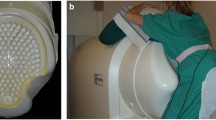Abstract
This study investigated cardiac function in 65 fetuses of mildly preeclamptic mothers and 55 fetuses of healthy mothers at 26–40 weeks of gestation. Fetuses with intrauterine growth restriction were excluded. Cardiac functions were evaluated by M-mode, pulsed-wave, and tissue Doppler echocardiography. The two groups were similar in terms of maternal age, gravidity, parity, and gestational age. Peak systolic aortic and pulmonary artery velocities were significantly lower in the fetuses of the preeclamptic mothers than in the fetuses of the healthy mothers. The two groups did not differ significantly in terms of shortening fraction or with regard to mitral or tricuspid annular plane systolic excursion. Pulsed-wave Doppler-derived E/A ratios in the mitral and tricuspid valves were similar in the two groups. The deceleration time of early mitral inflow was prolonged in the fetuses of the preeclamptic mothers. The Ea, Aa, and Ea/Aa ratios in the interventricular septum, left ventricle posterior wall, and right ventricle free wall were lower in the preeclampsia group than in the control group. The E/Ea ratio was higher in the preeclampsia group than in the control group. The isovolumic relaxation time and the right and left myocardial performance indices were higher in the fetuses of the preeclamptic mothers than in the fetuses of the healthy mothers. An increased ductus venosus pulsatility index (PI) and a decreased middle cerebral artery (MCA) PI were found in the fetuses of the preeclamptic mothers. All the fetuses were asymptomatic. The results suggest that the increase in fetal cardiac afterload in mild preeclampsia may have caused early subclinical changes in fetal systolic and diastolic cardiac function. In addition, the decrease in MCA-PI may have been caused by redistribution of fetal cardiac output in favor of the left ventricle, secondary to increased placental vascular resistance.
Similar content being viewed by others
References
Api O, Emeksiz MB, Api M, Ugurel V, Unal O (2009) Modified myocardial performance index for evaluation of fetal cardiac function in preeclampsia. Ultrasound Obstet Gynecol 33:51–57
Chu C, Gui YH, Ren YY, Shi LY (2012) The impacts of maternal gestational diabetes mellitus (GDM) on fetal hearts. Biomed Environ Sci 25:15–22
Cohn HE, Sacks EJ, Heymann MA, Rudolph AM (1974) Cardiovascular responses to hypoxemia and acidemia in fetal lambs. Am J Obstet Gynecol 120:817–824
Comas M, Crispi F (2012) Assessment of fetal cardiac function using tissue Doppler techniques. Fetal Diagn Ther 32:30–38
Crispi F, Comas M, Hernández-Andrade E et al (2009) Does preeclampsia influence fetal cardiovascular function in early-onset intrauterine growth restriction? Ultrasound Obstet Gynecol 34:660–665
Figueras F, Meler E, Iraola A et al (2007) Customized birth weight standards for a Spanish population. Eur J Obstet Gynecol Reprod Biol Med 136:20–24
Figueroa H, Silva MC, Kottmann C et al (2012) Fetal evaluation of the modified myocardial performance index in pregnancies complicated by diabetes. Prenat Diagn 32:943–948
Günenç O, Ciçek N, Görkemli H, Celik C, Acar A, Akyürek C (2002) The effect of methyldopa treatment on uterine, umblical, and fetal middle cerebral artery blood flows in pre-eclamptic patients. Arch Gynecol Obstet 266:141–144
Ichizuka K, Matsuoka R, Hasegawa J et al (2005) The Tei index for evaluation of fetal myocardial performance in sick fetuses. Early Hum Dev 81:273–279
Kadyrov M, Kingdom JC, Huppertz B (2006) Divergent trophoblast invasion and apoptosis in placental bed spiral arteries from pregnancies complicated by maternal anemia and early-onset preeclampsia/intrauterine growth restriction. Am J Obstet Gynecol 194:557–563
Karaye KM, Habib AG, Mohammed S, Rabiu M, Shehu MN (2010) Assessment of right ventricular systolic function using tricuspid annular-plane systolic excursion in Nigerians with systemic hypertension. Cardiovasc J Afr 21:186–190
Kiserud T, Ebbing C, Kessler J, Rasmussen S (2006) Fetal cardiac output, distribution to the placenta, and impact of placental compromise. Ultrasound Obstet Gynecol 28:126–136
Narin N, Cetin N, Kilic H et al (1999) Diagnostic value of troponin T in neonates of mild preeclamptic mothers. Biol Neonate 75:137–142
Ren Y, Zhou Q, Yan Y, Chu C, Gui Y, Li X (2011) Characterization of fetal cardiac structure and function detected by echocardiography in women with normal pregnancy and gestational diabetes mellitus. Prenat Diagn 31:459–465
Ropacka-Lesiak M, Korbelak T, Breborowicz G (2011) Doppler blood flow velocimetry in the middle cerebral artery in uncomplicated pregnancy. Ginekol Pol 82:185–190
Sibai BM (2003) Diagnosis and management of gestational hypertension and preeclampsia. Obstet Gynecol 102:181–192
Turan S, Turan OM, Miller J, Harman C, Reece EA, Baschat AA (2011) Decreased fetal cardiac performance in the first trimester correlates with hyperglycemia in pregestational maternal diabetes. Ultrasound Obstet Gynecol 38:325–331
Vatten LJ, Skjaerven R (2004) Is preeclampsia more than one disease? BJOG 111:298–302
Villar J, Carroli G, Wojdyla D et al (2006) World Health Organization Antenatal Care Trial Research Group (2006) Preeclampsia, gestational hypertension, and intrauterine growth restriction: related or independent conditions? Am J Obstet Gynecol 194:921–931
Visser W, Wallenburg HC (1995) Maternal and perinatal outcome of temporizing management in 254 consecutive patients with severe preeclampsia remote from term. Eur J Obstet Gynecol Reprod Biol 63:147–154
Wladimiroff JW, Tonge HM, Stewart PA (1986) Doppler ultrasound assessment of the cerebral blood flow in the human fetus. Br J Obstet Gynaecol 93:471–475
Zhou Q, Ren Y, Yan Y, Chu C, Gui Y, Li X (2012) Fetal tissue Doppler imaging in pregnancies complicated with preeclampsia with or without intrauterine growth restriction. Prenat Diagn 32:1021–1028
Zielinsky P, Piccoli AL Jr (2012) Myocardial hypertrophy and dysfunction in maternal diabetes. Early Hum Dev 88:273–278
Author information
Authors and Affiliations
Corresponding author
Rights and permissions
About this article
Cite this article
Balli, S., Kibar, A.E., Ece, İ. et al. Assessment of Fetal Cardiac Function in Mild Preeclampsia. Pediatr Cardiol 34, 1674–1679 (2013). https://doi.org/10.1007/s00246-013-0702-8
Received:
Accepted:
Published:
Issue Date:
DOI: https://doi.org/10.1007/s00246-013-0702-8




